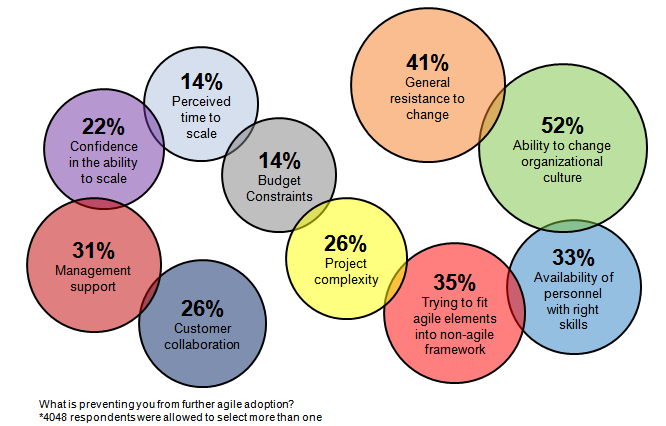We’ve all seen it happen. Though we try to show organizations the benefits of using a mature agile delivery framework, we still run into roadblocks. Though the status quo is killing their organization, some barriers to further Agile adoption happen way too often among organizations that need it most. I recently had a client ask me to introduce the elephant in the room. I was asked to actually list some common barriers others have dealt with. I want to thank our friends over a VersionOne for distributing an annual survey of the Agile space. One of the questions? What is preventing you from further agile adoption? Within the last published survey, 4048 people responded and they were able to vote for more than one barrier. The responses may sound familiar.
Barriers of Agile Adoption
[table align="center" caption="" width="500" colwidth="25|25|450" colalign="center|center|left"] #,Percentage,Barrier 1,52%,Ability to change organizational culture 2,41%,General resistance to change 3,35%,Trying to fit agile elements into non-agile framework 4,33%,Availability of personnel with right skills 5,31%,Management support 6,26%,Customer collaboration 7,26%,Project complexity 8,22%,Confidence in the ability to scale 9,14%,Perceived time to scale 10,14%,Budget constraints [/table]
Did they miss any in the list? How did you overcome your barrier?
Originally posted at LeadingAgile
